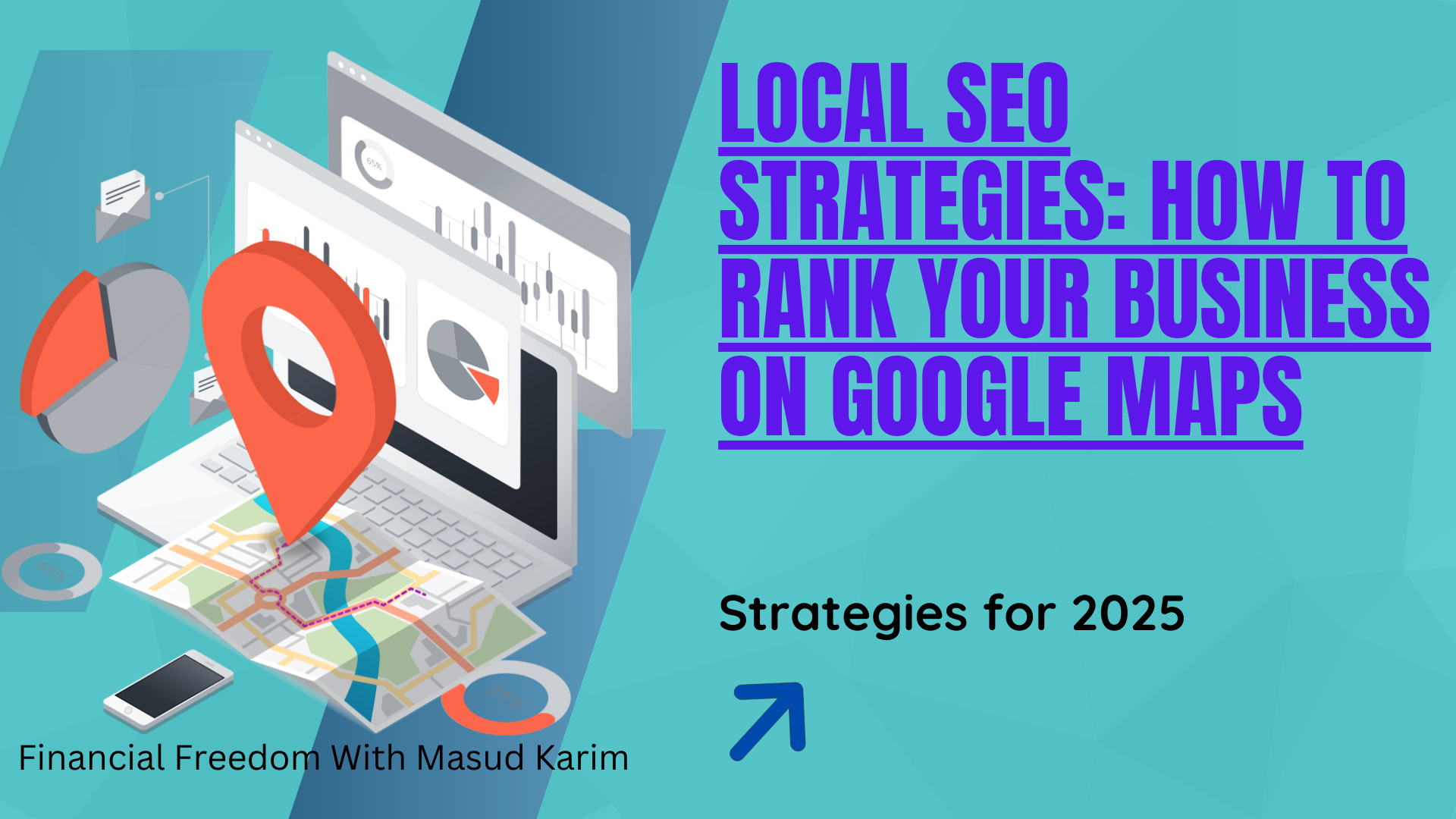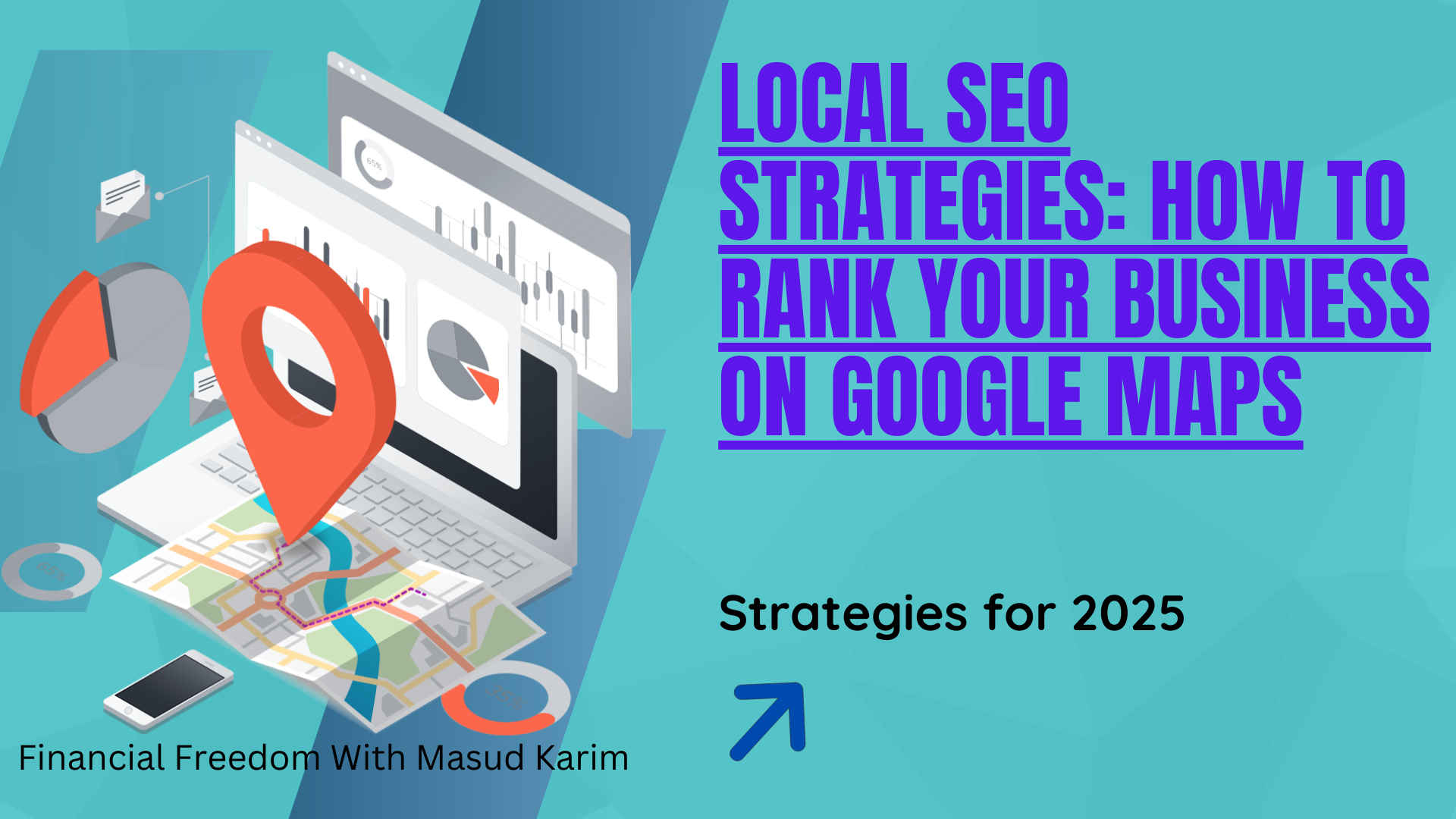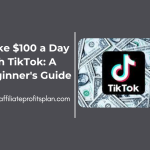Welcome to my article “Local SEO Strategies: How to Rank Your Business on Google Maps”.So, you’ve got a great business, a killer website, and products or services people need. If your business isn’t on Google Maps, does it even exist? In today’s hyper-connected world, being “searchable” is as essential as having a front door. Whether you’re a cozy café, a trendy boutique, or a trusted plumbing service, appearing on Google Maps isn’t just a nice-to-have—it’s a must-have. After all, how else will your customers find you when they’re just a block away, craving your double-shot espresso or needing a last-minute pipe repair? Spoiler: They won’t, unless you’ve nailed your local SEO game.
Local SEO (Search Engine Optimization) isn’t some mysterious art form practiced by digital wizards in dark basements. It’s a set of strategies designed to make your business the local star of search engine results. And when it comes to ranking on Google Maps, it’s all about making Google love your business enough to put it on the map—literally. But here’s the catch: Google doesn’t play favorites for no reason. You’ve got to earn that prime spot by optimizing your profile, racking up glowing reviews, and making sure your business shows up in all the right digital hangouts.
Think of Google Maps rankings as a local popularity contest, but instead of fancy outfits and talent shows, the judges (a.k.a. algorithms) look for accurate info, happy customers, and a solid online presence. Sounds like a lot? Don’t worry. This guide will break it down step by step, with plenty of actionable tips and a sprinkle of humor to keep you entertained. So buckle up, because by the time you’re done, your business will be ready to rock the Google Maps stage like a local legend.
Access Our Proven Tested Formula for $50-$100 Daily Income – Watch This FREE Video >>

Understanding Google Maps Ranking Factors
When it comes to ranking on Google Maps, Google doesn’t rely on a dartboard or throw random businesses onto the screen. No, my friend, there’s a method to madness—and it all boils down to three magical words: relevance, proximity, and prominence. Master these, and you’ll be the king (or queen) of the local SEO jungle.
1. Relevance: Google’s Love Language
Relevance is all about making sure your business aligns perfectly with what people are searching for. Imagine Google as a matchmaker—its sole mission is to pair searchers with the businesses they’re looking for. So, if someone types “artisan coffee near me,” but your Google Business Profile just says “we sell stuff,” well, you’re not exactly soulmate material. To boost relevance, use clear, keyword-rich descriptions and pick accurate business categories. Don’t list yourself as a sushi bar if you’re selling tacos—no matter how trendy fusion cuisine might be.
2. Proximity: Because Location Matters
Proximity is Google’s way of saying, “Hey, let’s not send someone across town for something they can find around the corner.” If you’ve ever searched for a “pizza delivery,” you’ve experienced this firsthand. You didn’t get recommendations for the best pizzerias in Italy (sadly), but rather a list of local spots ready to bring you a pie ASAP. This is where targeting local keywords and ensuring your address is up to date can give you an edge.
3. Prominence: The Popular Kid in Town
Prominence is all about how well-known and well-loved your business is. Think of it as your online reputation scorecard. Are people talking about you? Are they leaving reviews? Are other websites linking to you? Google takes all this into account when deciding how much of a VIP you are. So, rack up those glowing reviews, build some backlinks, and make sure your business has a good online buzz.
By focusing on these three factors, you’re telling Google, “Hey, I’m the real deal!” And when Google is convinced, it rewards you with a coveted spot on that all-important map. It’s a win-win—you get more visibility, and your customers find exactly what they need. Now, go forth and conquer the local search game!
Optimizing Your Google Business Profile (GBP)
Your Google Business Profile (GBP) is like your online storefront—it’s the first thing people see when they search for your business, and it needs to shine brighter than a freshly cleaned window. If you want Google Maps to love your business (and trust me, you do), it all starts here. Let’s break it down step by step, so your GBP isn’t just optimized—it’s irresistible.
1. Claim and Verify Your Business: Because You’ve Got to Show Up
First things first: if you haven’t claimed your business on Google yet, what are you waiting for? The process is straightforward—head to Google Business, search for your business, and claim it. Once that’s done, verify it. Think of verification as the “proof of address” Google needs to trust you actually exist. Without it, you’re just shouting into the void.
2. Complete Your Profile Information: No Detail Left Behind
When filling out your GBP, think like a perfectionist (or a detective). Include your business name, address, phone number (NAP), website, business hours, and a short but keyword-rich description. Accuracy is everything here—Google loves consistency, so make sure your NAP is the same across your website, social media, and directories. And while you’re at it, don’t forget to highlight special services or perks like “free Wi-Fi,” “dog-friendly,” or “the best cupcakes in town.”
Pro tip: Add attributes to your profile. These are little nuggets of information, like whether you’re wheelchair accessible or offer curbside pickup. The more info, the better!
3. Upload Eye-Catching Photos and Videos: Because Looks Matter
Let’s face it: we live in a visual world. Businesses with great photos are way more likely to attract clicks and customers. Upload high-quality images of your storefront, interior, products, and team in action. Bonus points for videos—virtual tours, customer testimonials, or even a behind-the-scenes look at how the magic happens (because who doesn’t want to see how donuts get made?).
Access Our Proven Tested Formula for $50-$100 Daily Income – Watch This FREE Video >>
And please, no blurry, outdated pictures of your 2015 logo. Show off your current vibe—customers want to know what to expect when they visit you IRL.
4. Keep It Fresh with Regular Updates
Your GBP isn’t a “set it and forget it” situation. Update it regularly with new photos, posts about special promotions, or even just seasonal changes in hours. Google likes businesses that stay active, and so do your potential customers. Got a new product line? Share it. Hosting a local event? Post about it. Just don’t let your profile gather dust.
5. Respond to Customer Questions and Reviews
Google lets customers ask questions directly on your GBP—don’t leave them hanging. Respond promptly and professionally to show that you’re engaged and reliable. The same goes for reviews. Thank people for positive feedback and address negative reviews with grace and solutions. It’s like digital customer service, and it goes a long way in building trust.
By giving your Google Business Profile the attention it deserves, you’re setting yourself up for local SEO success. Not only will Google appreciate your efforts, but your customers will, too. So polish that profile and watch your business become the shining star of Google Maps!
Building Local Citations and Backlinks
If local SEO were a recipe, citations and backlinks would be the secret sauce that takes it from “meh” to mouthwatering. These two factors are like digital word-of-mouth—they help Google and potential customers trust your business more. The good news? Building citations and backlinks isn’t rocket science. The better news? You’re about to become an expert.
1. Local Citations: The Digital Name-Dropping Game
A local citation is any online mention of your business’s name, address, and phone number (NAP). Think of it as your business’s digital business card, scattered across the web in all the right places. Citations are typically found in directories like Yelp, TripAdvisor, or niche-specific platforms like Zomato for restaurants or Healthgrades for medical practices.
But here’s the catch: consistency is key. If your address is “123 Main Street” on your website but “123 Main St.” on Yelp, Google might raise an eyebrow (or at least an algorithmic equivalent). Make sure your NAP details are accurate and uniform everywhere. Even that rogue listing from 2013 needs a cleanup—because Google never forgets.
Start with the heavy hitters like Google Business Profile, Bing Places, and Apple Maps. Then move on to industry-specific directories and your local Chamber of Commerce website. These listings boost your credibility and help you rank higher in local searches.
2. Backlinks: Your Digital Street Cred
Backlinks are links from other websites to yours, and they’re one of the biggest ranking factors in SEO. Think of them as endorsements—if reputable websites link to your business, Google sees it as a vote of confidence. But not all backlinks are created equal. A link from a respected local news site? Pure gold. A link from “TotallySketchySEO.com”? Not so much.
How to Build Quality Backlinks:
- Partner with Local Businesses: Team up with other businesses in your area for events, promotions, or sponsorships, and ask them to link to your website.
- Get Featured in Local News: Did you host a charity drive or launch a unique product? Pitch the story to local media outlets. A feature with a backlink to your site is a double win.
- Create Share-Worthy Content: Write blog posts, guides, or infographics about local topics (e.g., “Top 10 Things to Do in [Your City]”). If your content is valuable, people will link to it.
- Support Local Causes: Sponsor a local event, sports team, or nonprofit. They’ll often link back to your site as a thank-you.
3. The Power of Hyper-Local Mentions
Want to really dominate your local SEO? Focus on hyper-local citations and backlinks. Get listed on neighborhood association websites, town forums, or community blogs. These small-scale mentions may not seem like much, but they signal to Google that you’re the go-to business in your area.
4. Monitor and Maintain Your Digital Footprint
Building citations and backlinks isn’t a one-and-done deal. Regularly audit your listings to ensure accuracy (remember that NAP consistency!) and keep an eye on your backlinks using tools like Google Search Console or Ahrefs. If you find spammy or irrelevant links, disavow them—they’re more of a liability than an asset.
By building strong local citations and earning quality backlinks, you’re not just boosting your rankings—you’re telling both Google and your customers, “Hey, I’m the real deal!” So get out there, claim your spot in the digital landscape, and watch your business climb the local search ladder.
Gathering and Managing Customer Reviews
Customer reviews are like the digital equivalent of word-of-mouth recommendations—only louder and far-reaching. Not only do they influence whether people will choose your business over your competitors, but they also send powerful signals to Google about your trustworthiness and prominence. Translation: reviews can make or break your local SEO game. So, let’s dive into how to gather, manage, and leverage reviews to turn your business into the local crowd favorite.
1. Why Reviews Matter (Hint: They’re Not Just for Show)
Think about the last time you picked a restaurant, a plumber, or even a yoga studio. Odds are, you checked the reviews. And guess what? So does everyone else. According to research, a whopping majority of people trust online reviews as much as personal recommendations. Google feels the same way—businesses with more (and better) reviews tend to rank higher on Google Maps.
But reviews don’t just boost rankings—they build credibility and trust. A glowing review can turn a hesitant prospect into a loyal customer faster than you can say “5 stars.”
2. How to Encourage Positive Reviews (Without Sounding Desperate)
Here’s a little secret: most happy customers won’t think to leave a review unless you ask. And no, asking doesn’t make you needy—it makes you proactive.
- Make it Easy: Send follow-up emails or texts with a direct link to your Google review page. Nobody wants to spend 10 minutes hunting for the right page.
- Strike While the Iron is Hot: Ask for a review right after you’ve wowed a customer. Whether it’s after a successful service call or a great meal, timing is everything.
- Sweeten the Deal: While outright bribery is a no-no (Google doesn’t like that), you can gently nudge customers by offering something like a loyalty program entry or a heartfelt thank-you note for their effort.
3. Managing Reviews Like a Pro (Because Not All Feedback Is Glowing)
Reviews are a two-way conversation—responding shows that you care and are actively engaged with your customers. Here’s how to handle the good, the bad, and the ugly.
- For Positive Reviews: A simple “Thank you!” goes a long way. Take it up a notch by personalizing your response. For example: “We’re thrilled you loved our coffee, Sarah! Come back anytime for another latte on us.”
- For Negative Reviews: Stay calm. Don’t let a bad review ruin your day—or your reputation. Apologize sincerely, offer to make things right, and, if appropriate, take the conversation offline. Your goal is to resolve the issue and show potential customers that you’re committed to quality service.
- For Neutral Reviews: If someone gives you three stars and no explanation, thank them anyway and invite them to share more feedback. It’s a great way to show you care about improving.
4. Keep an Eye on Your Reviews (Google Does Too)
Set up Google Alerts or use tools like Reputation.com to stay on top of new reviews. The quicker you respond, the more impressed your customers (and Google) will be. Plus, tracking reviews over time can help you spot trends—if multiple people are complaining about the same thing, it’s probably time for some improvements.
5. Celebrate Your Wins
Got a glowing review? Don’t let it collect digital dust! Share it on your website, social media, or even in your store. Positive feedback not only attracts new customers but also boosts morale for your team.
Access Our Proven Tested Formula for $50-$100 Daily Income – Watch This FREE Video >>
Gathering and managing reviews isn’t just about rankings—it’s about building relationships and showcasing your business in the best light. So get out there, collect those reviews, respond like the rock star you are, and watch your business shine brighter than a neon “open” sign.
Leveraging Local Content and Social Media
If local SEO is a party, then local content and social media are your hype squad. They’re the ones spreading the word, keeping the energy alive, and making sure everyone knows you’re the life of the (digital) block. Not only do these tools help you connect with your community, but they also send positive signals to Google that your business is active, relevant, and deeply rooted in the local scene. Here’s how to make the most of them.
1. Create Locally Relevant Content: Be the Voice of Your Community
Local content is your chance to show off your hometown pride while subtly (or not-so-subtly) promoting your business. Think beyond the standard “About Us” page and focus on creating content that speaks to your area’s unique flavor.
- Write About Local Events: Is your town hosting a festival, parade, or charity run? Write a blog post about it and tie it back to your business. For example, “10 Must-See Events at the Downtown Festival (and Stop by for Our Special Latte While You’re Here).”
- Highlight Local Landmarks: If your business is near a popular spot, create a guide or mention it in your content. “We’re just two blocks from the historic clock tower—stop by after your visit!”
- Solve Local Problems: Offer tips or solutions for issues specific to your area. A landscaper could write, “5 Plants That Thrive in [City’s] Humid Climate,” while a car repair shop might share, “How to Prepare Your Car for [City’s] Harsh Winters.”
The key? Sprinkle in location-specific keywords naturally so Google and your readers know you’re deeply connected to the community.
2. Social Media: Your Virtual Town Square
Social media platforms are where your customers hang out, so why not meet them there? It’s the perfect place to showcase your business’s personality, connect with your community, and spread the word about your offerings.
- Get Geo-Specific: Use location tags and hashtags in your posts to attract locals. A post tagged with #ShopLocal[YourCity] or #BestPizza[YourCity] can do wonders for your visibility.
- Engage With the Community: Follow and interact with local influencers, businesses, and community pages. Share their content, comment on their posts, and build relationships—it’s good for business and for your digital karma.
- Post About Local Happenings: Whether it’s a snow day, a local sports team’s big win, or a quirky town tradition, jump into the conversation. People love seeing businesses that are part of the community fabric.
3. Encourage User-Generated Content (UGC): Let Your Customers Do the Talking
Want free promotion? Get your customers involved! Encourage them to share photos or stories about their experiences with your business and tag you in their posts.
- Run Contests: Offer a small prize (like a discount or freebie) for the best customer photo featuring your product or location.
- Share Customer Stories: Did someone leave a fantastic review or share an amazing photo of your product? Repost it (with their permission, of course) and thank them publicly.
- Create a Hashtag: Make a catchy, business-specific hashtag like #BestBurgers[YourCity] or #PamperedAt[YourSalon]. This makes it easy for customers to find and share your content.
4. Don’t Forget Video Content: Because Everyone Loves a Good Reel
Video is the king of content, and it’s especially powerful for showcasing your business. Post quick, engaging clips on platforms like Instagram, Facebook, and TikTok. Ideas include:
- A behind-the-scenes tour of your store or workspace.
- Quick tips or tutorials (e.g., “How to Style This Year’s Hottest Haircut” for a salon).
- Highlighting a fun day in your area with a plug for your business, like “Exploring [City]: Don’t Forget to Stop by for the Best Coffee!”
5. Consistency Is Key: Stay Active and Engaged
It’s not enough to post once a month and call it a day. Consistency shows your audience—and Google—that you’re active and invested. Set a posting schedule, engage with comments and messages, and keep the conversation going.
By combining locally focused content and social media savvy, you’ll do more than just improve your Google Maps ranking—you’ll build a loyal following of local customers who see you as an integral part of the community. So start creating, posting, and connecting—your business (and your SEO) will thank you!
Conclusion
Ranking your business on Google Maps isn’t just about ticking boxes or gaming the system—it’s about building a strong, authentic presence that serves your local community and gets the recognition it deserves. Local SEO is like planting a tree. You nurture it with the right strategies—optimizing your Google Business Profile, building local citations and backlinks, managing reviews, creating engaging local content, and staying active on social media. Over time, your efforts will grow into a sturdy, flourishing presence on Google Maps that stands tall for everyone to see.
Access Our Proven Tested Formula for $50-$100 Daily Income – Watch This FREE Video >>
But let’s be real—it’s not a one-and-done deal. Local SEO is an ongoing process. Trends change, customer needs evolve, and Google’s algorithms love to keep us on our toes. The good news? You don’t need to be a tech wizard to stay ahead. With consistency, creativity, and a genuine commitment to your local audience, you can outshine the competition and become the go-to business in your area.
So, what are you waiting for? Whether you’re a coffee shop on a bustling main street, a yoga studio tucked in a quiet neighborhood, or a plumbing service ready to rescue the day, these strategies are your ticket to digital stardom. Start implementing them today, and before you know it, your business will not just be on the map—it’ll own it.
And remember, when Google Maps guides someone to your door, don’t forget to greet them with a smile (and maybe a killer product or service). Because at the end of the day, the best SEO strategy is a happy customer who’ll spread the word—online and off. Now go get ‘em, local legend!
Thanks a lot for reading my article on “Local SEO Strategies: How to Rank Your Business on Google Maps” till the end. Hope you’ve helped. See you with another article.










